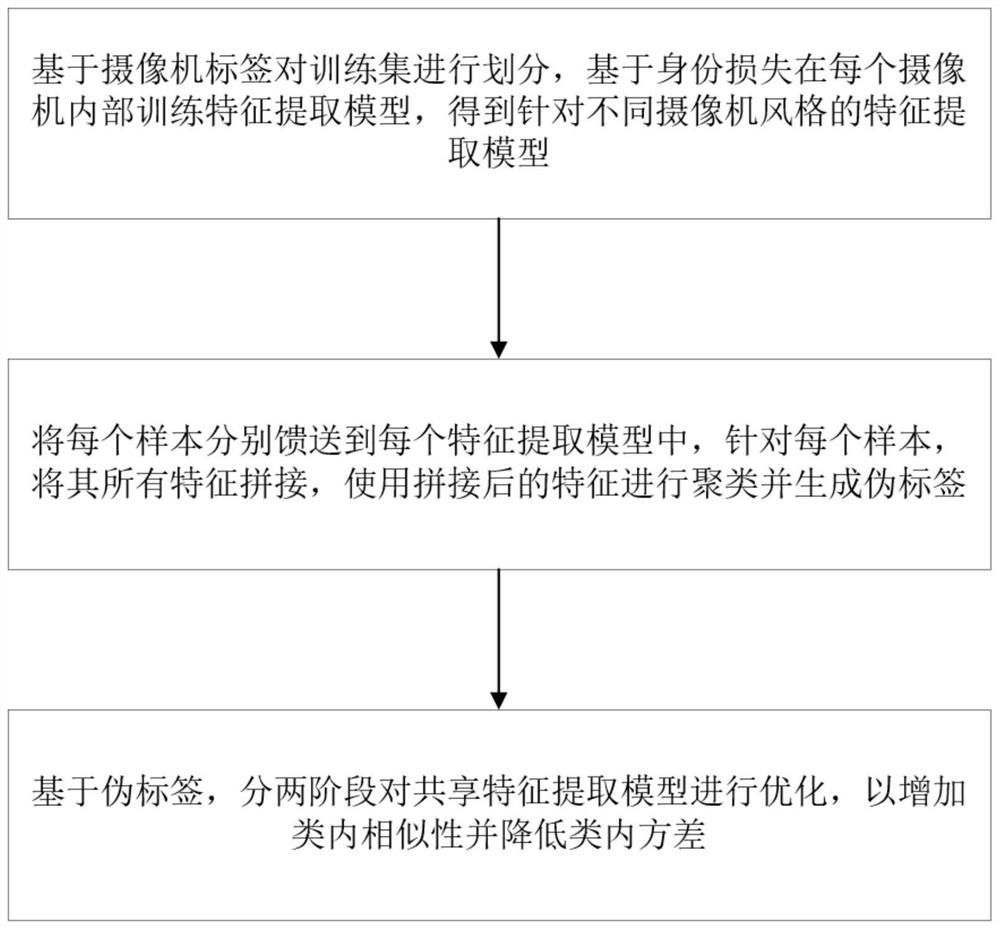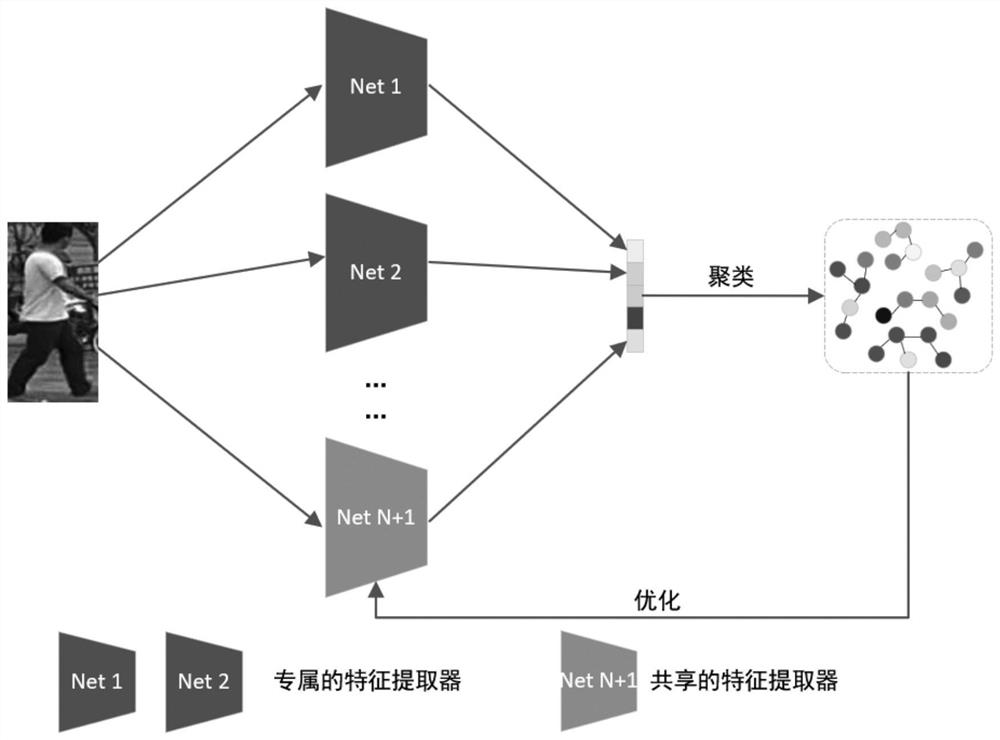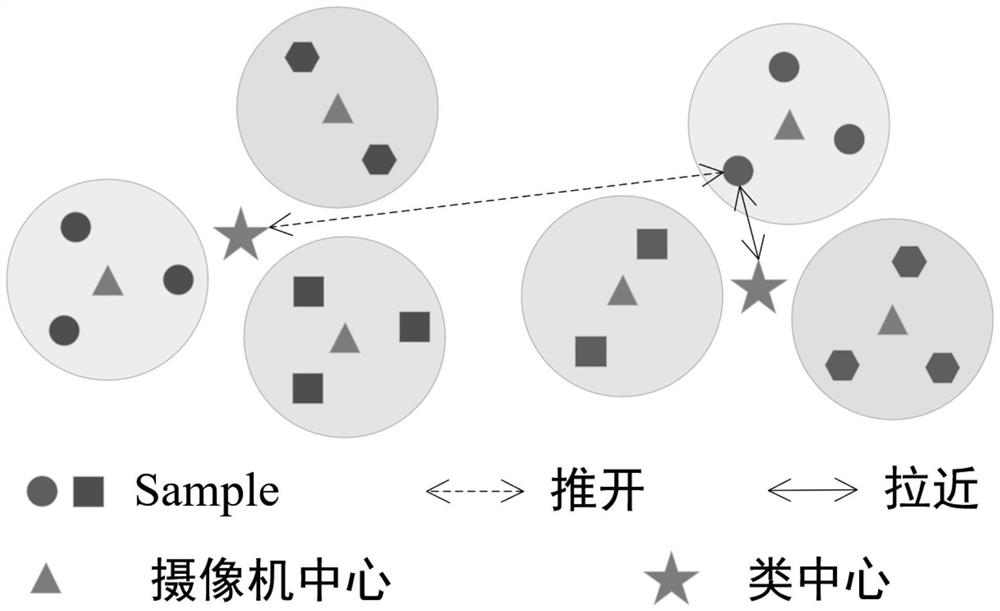Unsupervised pedestrian re-identification method based on multi-feature clustering
A pedestrian re-identification and multi-feature technology, which is applied in the field of unsupervised pedestrian re-identification based on multi-feature clustering, can solve the problems of poor robustness of pseudo-label prediction algorithms, increase intra-class similarity, reduce intra-class variance, The effect of improving robustness
- Summary
- Abstract
- Description
- Claims
- Application Information
AI Technical Summary
Problems solved by technology
Method used
Image
Examples
Embodiment Construction
[0039] The technical solutions in the embodiments of the present invention will be described below with reference to the accompanying drawings in the embodiments of the present invention.
[0040] figure 1 is the specific flow chart of the implementation of the present invention, figure 2 is the overall frame diagram of the present invention, such as figure 1 and figure 2 As shown, the method includes:
[0041] Step 1: Divide the training set based on the camera label, train the feature extraction model inside each camera based on the identity loss, and obtain the feature extraction model for different camera styles;
[0042] Step 2: Feed each sample into each feature extraction model, and for each sample, splicing all its features, use the spliced features to cluster and generate pseudo-labels;
[0043] Step 3: Based on pseudo-labels, the shared feature extraction model is optimized in two stages to increase intra-class similarity and reduce intra-class variance.
[...
PUM
 Login to View More
Login to View More Abstract
Description
Claims
Application Information
 Login to View More
Login to View More - R&D
- Intellectual Property
- Life Sciences
- Materials
- Tech Scout
- Unparalleled Data Quality
- Higher Quality Content
- 60% Fewer Hallucinations
Browse by: Latest US Patents, China's latest patents, Technical Efficacy Thesaurus, Application Domain, Technology Topic, Popular Technical Reports.
© 2025 PatSnap. All rights reserved.Legal|Privacy policy|Modern Slavery Act Transparency Statement|Sitemap|About US| Contact US: help@patsnap.com



